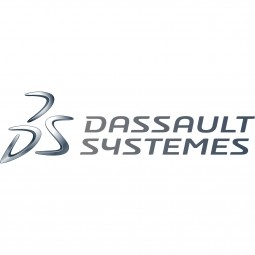
Technology Category
- Analytics & Modeling - Digital Twin / Simulation
Applicable Industries
- Electronics
Applicable Functions
- Product Research & Development
Use Cases
- Digital Twin
The Customer
Dongyang E&P
About The Customer
Dongyang E&P is Korea’s number one switch-mode power supply (SMPS) manufacturer. Their product includes switching mode power supplies used in cellular phones, office automatic supplies, and digital electronic equipment.
The Challenge
To achieve global leadership, Dongyang E&P needed to improve collaboration between product development teams. The company already had a product lifecycle management (PLM) system in place, yet it needed a platform that would facilitate collaboration and improve problem detection before going to mass production.
The Solution
Dongyang E&P chose Dassault Systemes' 3DEXPERIENCE platform to boost collaboration between its designers, engineers and manufacturing teams, and to shorten product development time.
In the past, collaborations between teams only began after a product took shape. Communication was limited to the development department. Today, all departments involved in product development collaborate in real-time throughout the course of a rollout.
In the past, collaborations between teams only began after a product took shape. Communication was limited to the development department. Today, all departments involved in product development collaborate in real-time throughout the course of a rollout.
Operational Impact
Quantitative Benefit

Case Study missing?
Start adding your own!
Register with your work email and create a new case study profile for your business.
Related Case Studies.

Case Study
Remote Temperature Monitoring of Perishable Goods Saves Money
RMONI was facing temperature monitoring challenges in a cold chain business. A cold chain must be established and maintained to ensure goods have been properly refrigerated during every step of the process, making temperature monitoring a critical business function. Manual registration practice can be very costly, labor intensive and prone to mistakes.

Case Study
Predictive maintenance in Schneider Electric
Schneider Electric Le Vaudreuil factory in France is recognized by the World Economic Forum as one of the world’s top nine most advanced “lighthouse” sites, applying Fourth Industrial Revolution technologies at large scale. It was experiencing machine-health and unplanned downtime issues on a critical machine within their manufacturing process. They were looking for a solution that could easily leverage existing machine data feeds, be used by machine operators without requiring complex setup or extensive training, and with a fast return on investment.

Case Study
Cloud Solution for Energy Management Platform-Schneider Electric
Schneider Electric required a cloud solution for its energy management platform to manage high computational operations, which were essential for catering to client requirements. As the business involves storage and analysis of huge amounts of data, the company also needed a convenient and scalable storage solution to facilitate operations efficiently.

Case Study
Leveraging the IoT to Gain a Competitive Edge in International Competition
Many large manufacturers in and outside Japan are competing for larger market share in the same space, expecting a growing demand for projectors in the areas of entertainment, which requires glamor and strong visual performance as well as digital signage that can attract people’s attention. “It is becoming more and more difficult to differentiate ourselves with stand-alone hardware products,” says Kazuyuki Kitagawa, Director of Service & Support at Panasonic AVC Networks. “In order for Panasonic to grow market share and overall business, it is essential for us to develop solutions that deliver significant added value.” Panasonic believes projection failure and quality deterioration should never happen. This is what and has driven them to make their projectors IoT-enabled. More specifically, Panasonic has developed a system that collects data from projectors, visualizes detailed operational statuses, and predicts issues and address them before failure occurs. Their projectors are embedded with a variety of sensors that measure power supply, voltage, video input/ output signals, intake/exhaust air temperatures, cooling fan operations, and light bulb operating time. These sensors have been used to make the projector more intelligent, automatically suspending operation when the temperature rises excessively, and automatically switching light bulbs. Although this was a great first step, Panasonic projectors were still not equipped with any capability to send the data over a network.









